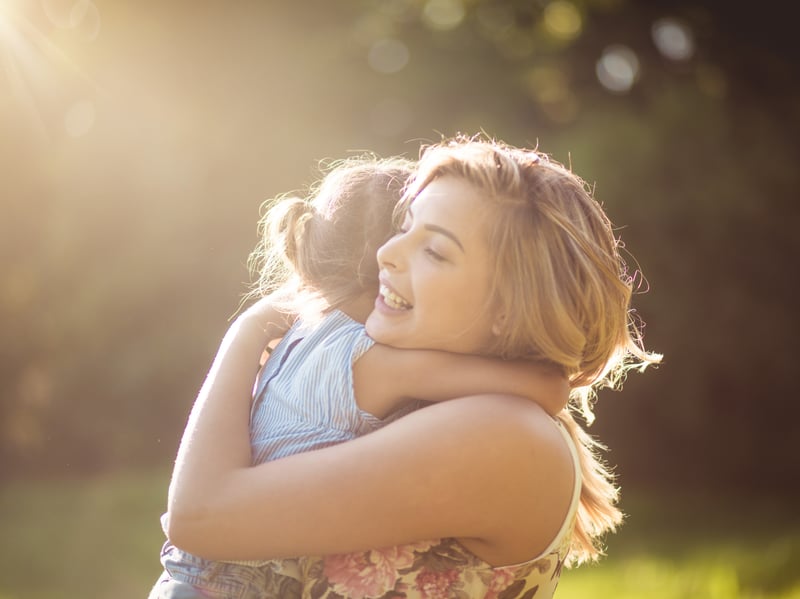Get Healthy!

- Posted May 24, 2023
'Secure Attachment Style': Parents, Here's What to Know
Picture this: A child running towards their parent, arms outstretched, with an infectious smile stretching from ear to ear. That deep, unbreakable bond built on trust, love and security is an outgrowth of a secure attachment style, which forms the foundation for healthy relationships.
This article will explore the characteristics of a secure attachment style, highlighting key differences between secure and insecure attachment. It will outline the benefits of nurturing a secure attachment, ranging from enhanced self-esteem to improved resilience and the capacity for fulfilling relationships.
What is secure attachment?
"Your attachment style from your infancy can influence your relationships with others, but as humans, we're complex creatures," Coda Derrig, a clinical psychologist at the Cleveland Clinic, said in a clinic article. "There are a lot of other factors at play as well. We all have multiple experiences that influence our ability to form healthy relationships over time."
Secure attachment is one of four attachment theories that are outgrowths of research conducted by psychologists John Bowlby and Mary Ainsworth, according to an article on the health site SimplyPsychology.
In a laboratory test, Ainsworth observed the behaviors and reactions of infants when faced with brief separations from and reunions with their caregivers. Through her observations, she identified three primary attachment styles:
- Secure
- Anxious-resistant
- Avoidant.
Many years later, researchers added a fourth style, now referred to as disorganized attachment.
"Secure attachment is what we all strive for," Derrig said. "Babies who form secure attachments to their primary caregiver are more likely to become adults who confidently seek out healthy relationships with others and are reliable and loving partners themselves."
Secure vs. insecure attachment: What's the difference?
Psychologist Francyne Zeltser, director of mental health services at Manhattan Psychology Group in New York City, offered an important takeaway.
"Of the four attachment styles, secure, anxious, resistant or avoidant, and disorganized, the last three are all considered insecure attachment styles,"she said.
Better Brains for Babies, an organization under the Georgia Department of Human Services, points out that a strong and secure attachment begins to form as infants experience positive interactions with their caregivers. Babies learn to place their trust in the care and support provided by others, establishing a sense of security within themselves.
Children parented under a secure-attachment style tend to:
- Have less extreme reactions to stress
- Be more willing to try new things and explore independently
- Be better problem solvers
- Have better relationships with others.
When infants have negative or unpredictable experiences with a caregiver, however, the likelihood of developing an insecure attachment increases. Children with insecure attachment learn that adults cannot be relied upon and find it challenging to trust others easily. These children tend to:
- Be unwilling to interact with others
- Exaggerate distress
- Show anger, anxiety or fear.
"Overall, secure attachment stems from a parent who exhibits high responsiveness," Zeltser said. "These children have the space to experience the world and their parent's support and availability to help them if needed. These kids won't panic when they separate from their parents. They're more confident and autonomous and can persevere through challenges."
Secure attachment examples
Children who develop a secure attachment acquire valuable skills for self-regulating their social, emotional and cognitive behaviors, according to SimplyPsychology.
Moreover, securely attached children show a balanced approach to behavior, expressing a healthy need for both intimacy and autonomy. The development of autonomy is crucial as it empowers them to interact confidently with their environment, according to the site.
Some examples seen in kids who have experienced secure attachment include:
- Positive response to the return of parents
- Comfortable interactions with others
- Being able to comfortably explore and play in new areas
- Preference for parents over strangers
- Seeking comfort from parents.
Zeltzer noted there are many examples of secure attachment among today's parents.
"Think of a young child that finds comfort in his mother's reassuring smile before venturing onto the jungle gym to join other kids playing at the park," she said. "Or consider an older child nervous about her part in the school play but finds strength and courage after she scans the audience and finds her mother nodding with empathy and unwavering support."
These, Zeltzer said, are all examples of secure attachment at its finest.
Benefits of secure attachment
Through a secure attachment bond, your baby learns to trust you and develops the ability to express their emotions and eventually to trust others, according to HelpGuide.org, a nonprofit that offers online information about mental health.
As you and your baby forge a strong connection, they acquire the skills necessary for a healthy sense of self and the capacity for loving, empathetic relationships.
A secure attachment nurtures the growth and development of the brain regions responsible for social and emotional development, communication and building relationships. This relationship forms the foundation of your child's ability to establish healthy connections with others. Qualities that are often taken for granted in adult relationships, such as empathy, understanding, love and responsiveness, are first learned during infancy.
Numerous sources highlight the enduring benefits of secure attachment in older adults, including increased emotional well-being, resilience in adversity and enhanced social support networks.
"Quite simply, secure attachment and parent-child bonding established early in life lay the groundwork for healthier aging and more fulfilling relationships in later years,"Zeltser said.
Creating a secure-attachment relationship will pay off later in life
Cultivating a secure attachment with your children is an investment that yields lifelong rewards. A secure attachment style forms the bedrock for best social, emotional and cognitive development by fostering trust, emotional stability and healthy connections. As parents prioritize and nurture secure attachments, they empower children to navigate the complexities of life with confidence, becoming well-balanced and productive adults.
SOURCE: Francyne Zeltser, PsyD, clinical director, psychological services, Manhattan Psychology Group, New York City





